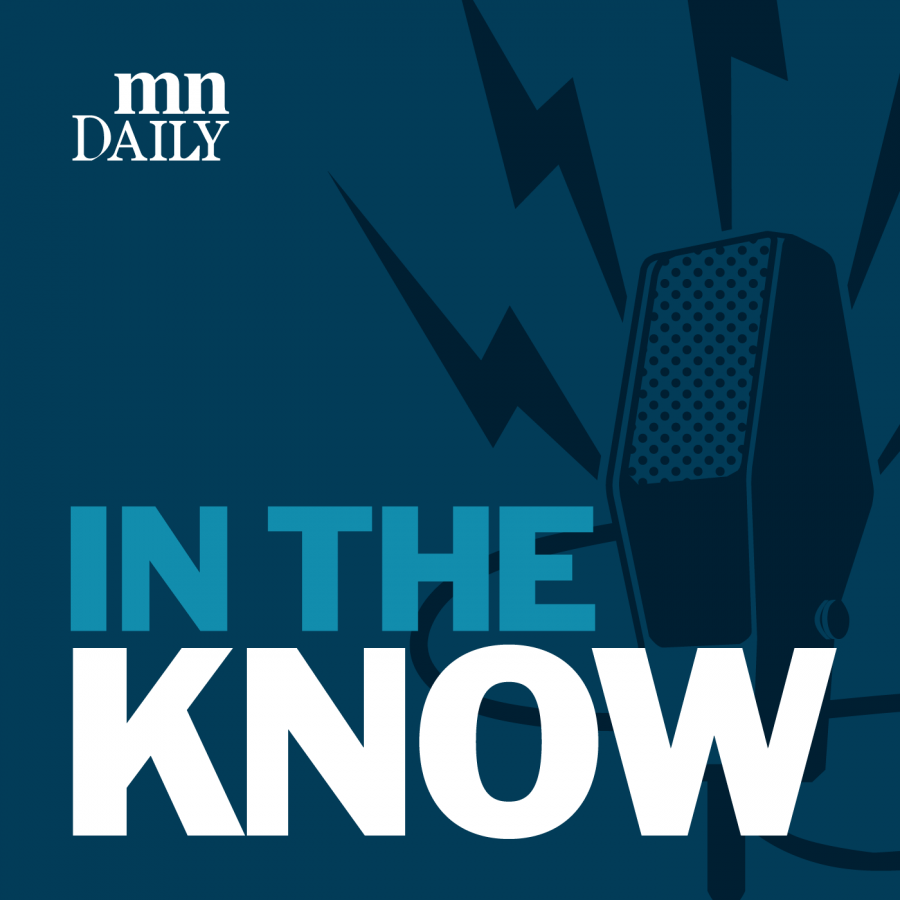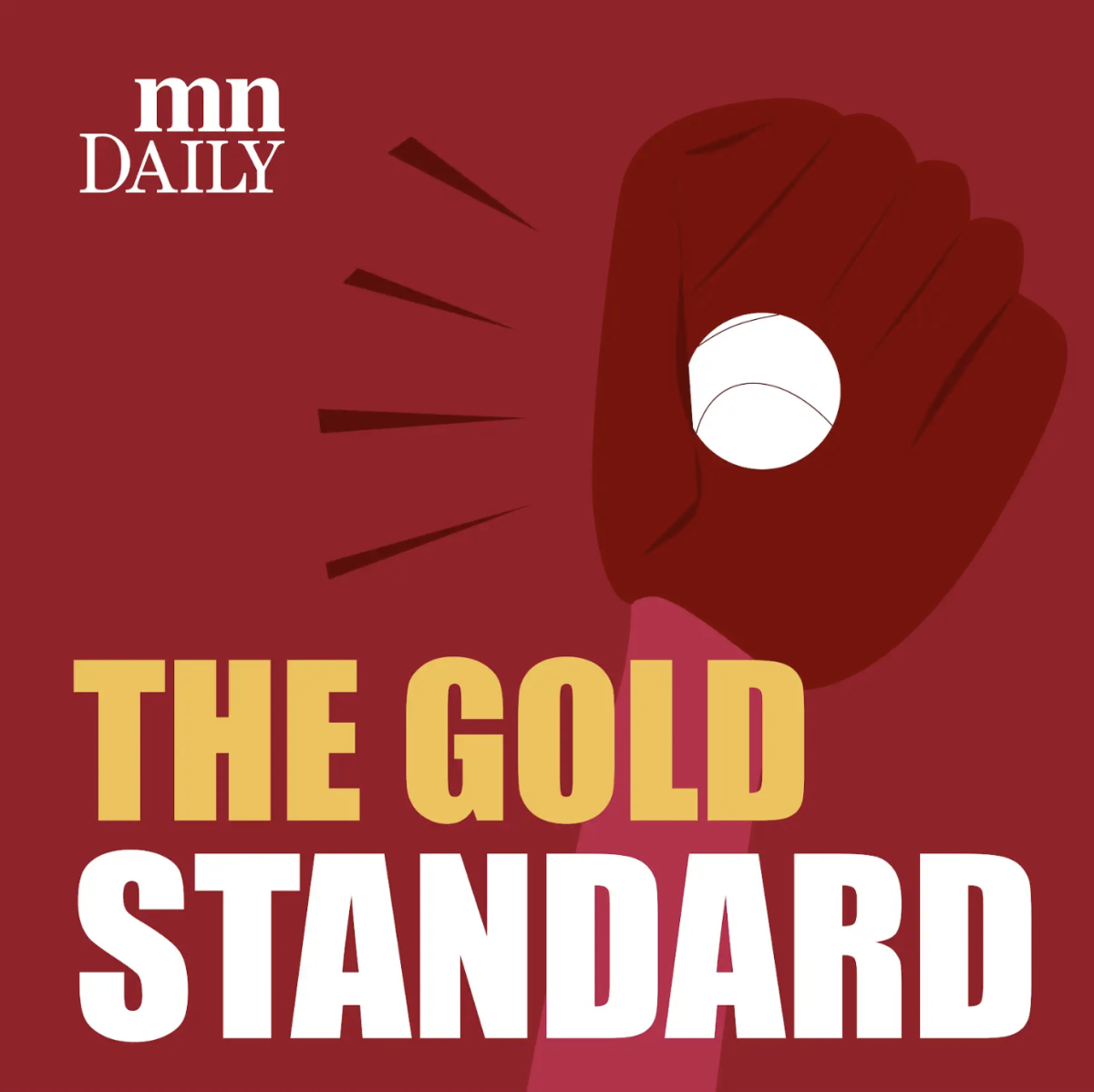KAYLIE SIROVY: Hello, I’m Kaylie Sirovy, and welcome to In the Know, the podcast brought to you by the Minnesota Daily. In today’s episode, we’ll be discussing an exciting photo showcase titled “Going Out, Coming In” at the Mill City Museum. This exhibit takes us on a captivating journey through LGBTQ spaces in downtown Minneapolis, spanning from the 1940s all the way to the 2000’s through the lens of a camera.
Joining me today is Noah Barth, the lead exhibit developer who played a vital role in assembling this display. Noah’s involvement encompassed research, including photo analysis and gathering historical information, as well as writing part of the text on display.
NOAH BARTH: We really wanted to highlight the formation of a community in downtown Minneapolis through these locations, but we wanted to tell a story more than just about, you know, buildings or structures, but really what was happening on the inside and what was happening is people were finding community. They were finding themselves. They were politically mobilizing. They were finding romantic love. They were finding friendships and so we really wanted to tell the story of all of these different aspects of queer identity formation but through the lens of locations.
SIROVY: Within this exhibition, you can discover a diverse array of venues, including bars, warehouses and bathhouses, that served as havens for the LGBTQ community. However, these spaces were unlike the clubs we know today, as they existed in the shadows of secrecy. In a time when acceptance was scarce, these venues provided a sanctuary for individuals to express their identities, form connections, and celebrate their shared experiences.
BARTH: And so we definitely wanted this exhibit to be for queer people, first and foremost. Part of that is we want folks to be able to walk through their city and see themselves reflected in the landscape of the city, in the fabric of the city and know that they belong, not just because they’re here now, but because we’ve been here for a very long time.
SIROVY: The beginning of the exhibit can be traced back to the launch of digital maps from Twin Cities Pride LGBTQ+ history tours last year in 2022. These maps meticulously documented approximately 55 distinct locations spanning the Twin Cities, encompassing neighborhoods such as Powderhorn, Northeast, the University area, and extending all the way to St. Paul.

BARTH: So because many of these places are torn down it was really important for us to include, like, the location of these spaces. That way when you’re walking to your work downtown or walking to your favorite bar, you can recognize, ‘oh, this piece of history happened at this location’ and you can really feel yourselves embodied in the city and your history embodied in the city.
SIROVY: Allow me to introduce Lizzie Ehrenhalt, who collaborated with Barth as a co-writer for both the digital maps project and the present undertaking at Mill City. Ehrenhalt also serves as the editor of Minopedia at the Minnesota Historical Society.
LIZZIE EHRENHALT: That’s why this was so important because we wanted to document it now while they were still some living memory of it. But then in addition to talking about all of those sites, we have panels that address broader topics in the history of this area. We talk about how queer and trans people found each other, particularly before gay liberation. So we talk about how you would signal to other queer people that you were there in such a way that you would get the attention of the people you wanted while avoiding the unsafe attention of people you didn’t.
So that had to do a lot with visual coding. The kind of dress that you wore, the colors that you wore. In one of our panels, we talk about how the color green was used to signal a queer identity, possibly building off of the symbol of the green carnation that Oscar Wilde started in the 1890s and then eventually the hanky code, which was a sometimes very specific way to flag what you were seeking.
SIROVY: The exhibit also delves into the profound impact of urban renewal on downtown Minneapolis between 1958 and 1965, a period that brought about immense changes to the community. Regrettably, this process not only displaced but completely eradicated the vibrant neighborhood known as the Gateway. Within this neighborhood, affordable hotels, bustling bars, and a thriving queer population coexisted with working-class individuals who sought its affordability. However, city planners deemed the neighborhood undesirable and as a result, approximately 10 square blocks in the old gateway district were physically demolished, leading to the loss of numerous queer and trans spaces.
EHRENHALT: I think, too, it was the commitment of the exhibit team to documenting hidden history or at least history that’s more dormant. Sometimes it’s in people, but we want to bring it out and bring out their memories and so that was what I would call the soul of the exhibit.
SIROVY: Going further into this hidden history, the exhibit sheds light on the issue of exclusion within these spaces, specifically with women and people of color. There were few, if any, bars in Minneapolis prior to 2000 that were inclusive of queer women, leaving them to create their own spaces and communities. Many of the bars the photo panels address not only turned away women but also demonstrated a lack of welcome towards people of color, often displaying outright hostility towards them.
BARTH: I have been saying that, you know, Minneapolis or Minnesota just declared itself a trans refuge state. And, you know, as a duty to our community, it is our responsibility to make sure that our spaces actually reflect that. And not just on a state level, but in a micro level in our actual community spaces.
SIROVY: As stated on Mill City’s website, they want people to, “leave with an understanding of the importance of community spaces, a sense of empathy or solidarity with LGBTQIA+ people, and a sense of belonging and empowerment in seeing queer history embedded into the landscape of the city.” Do you think that was accomplished?
BARTH: From what I’ve seen and from what I’ve heard, people are really excited about this exhibit. They are thrilled that the Minnesota Historical Society has done an exhibit for LGBTQ plus people. I believe it’s the first one that MNHS has done.
And I think folks want more of it. And so I hope we get more of it. I hope we see more exhibits like this that are not just panel exhibits, but include 3D objects and that we can expand the story beyond just downtown Minneapolis, but Minnesota at large.
EHRENHALT: It was really rewarding because I could see people lingering in front of different panels and pointing at certain things and obviously telling personal stories about when they would go to a place or some kind of connection to a site, even if the building is torn down.
So there has been a really personal response and there’s been a really positive response because this is really personal history and people have a lot of different relationships to downtown Minneapolis, but a lot of us have a relationship of some kind and this exhibit is drawing on that.
SIROVY: Going Out, Coming In will be on display in the Mill City lobby until October 8 of this year and Twin Cities Pride will continue to provide the LGBTQI+ History Tours mentioned earlier if you want to learn more.
This episode was written and produced by Kaylie Sirovy. For questions, comments, or concerns, make sure to email us at [email protected]. Thank you for listening. I’m Kaylie, and this is In The Know.




